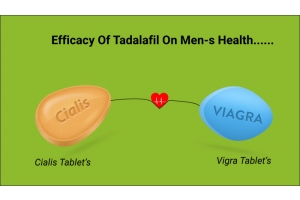How to Treat Blood Cancer: Best Medicine For Treating Blood Cancer
How to Treat Blood Cancer: Best Medicine For Treating Blood Cancer.
We all are born with specific blood-cell numbers in our bodies.
Each cell type has its role to play.
Red blood cells make the blood red and carry oxygen to the body; White blood cells are the warriors who bar up our immune system, and Platelet cells help in blood clotting by preventing the bleeding.
The definition
Blood cancer is a deadly condition characterized by ill-functioning of any of these blood-cell types.
It occurs when any blood-cell type starts multiplying and build-up chunks in the bone marrow (a semi-solid tissue where new blood cell are produced) and other tissues.
As a result, they fail to work for what they were meant.
The effect
Platelet could no longer clot the blood leading to excessive bleeding, the red blood cells lose the ability to distribute the oxygen to the body causing hypoxemia (increased risk of death), and white blood cells become unarmed and make the immune system impaired making your body more susceptible to infection and fever.
The treatment
There’s no fixed or predefined set of treatment for everyone.
The treatment of blood cancer depends on various factors like the age of the patient, type of blood cancer, the rate at which disease is spreading, what’s the stage of the patient.
The cancer-specialists conduct several tests like Complete Blood Count (CBC) for counting the total number of blood cells from the blood sample
From CBC they determine the abnormalities in the blood cells and carry bone marrow biopsy for confirming the diagnosis of blood-related cancer.
Based on the reports, they suggest any of these treatments:
Stem cell transplantation
When our blood cells don’t function properly, bone marrow uses stem cells as blood cell and immune system.
But as cancer involves complex therapies, stem cells get wiped off or weakened.
Stem cell transplant refers to introducing stem cell to the body for building a brand new immune system.
There are two types of stem implantation. They are:
- allogeneic
- autologous
In autologous implantation, patients use their own stem cells for manufacturing their blood cells.
Allogeneic implantation is carried when patients lose their bone marrow while extensive therapies like chemotherapy.
The process involves getting healthy cells from the donor— provided the donor’s stem cell should closely map with the patient’s bone marrow stem cell.
It is the prime reason why we come across news like “sibling saved a life” because they have higher chances of possessing similar stem cells; however, it’s not guaranteed.
Chemotherapy
It’s like giving an antibacterial dose to kill bacteria but on a grand scale.
When anticancer drugs are administered in the body, they interfere with the cancer cells and try to bridle their growth.
Depending on the stage, the patient receives the anticancer drug either orally or intravenously.
In specific cases, doctors are compelled to use stem cell transplant and chemotherapy together where stem cell therapy annuls the side effect of chemo.
Drugs like KEYTRUDA 100 MG-4 ML inhibits the cancer cell from disseminating.
Radiation therapy
The DNA in cancer cells are damaged and affect the healthy cells around.
As more number of cells get damaged, cancer spreads in the body.
Through radiation therapy, cancer-pundits use energized beam of overwhelming radiation to destroy or halt the cancer cells growth.
Cellular immunotherapy
The mentioned traditional methods are not the guaranteed life-saving methods.
Despite spending boatloads of money, a patient might re-form cancer cells in the blood.
Recent researches have given probable hope for treating an advanced form of blood cancer through cellular immunotherapy.
In the process, T-cells (WBC subtype which plays a pivotal part in providing immunity) are taken out and programmed genetically to destroy the tumor cells.
The therapy is at the infant stage and may become a groundbreaking method for treating blood cancer.
We advise you to get an insight into each method from your doctor and then proceed with the decision.








